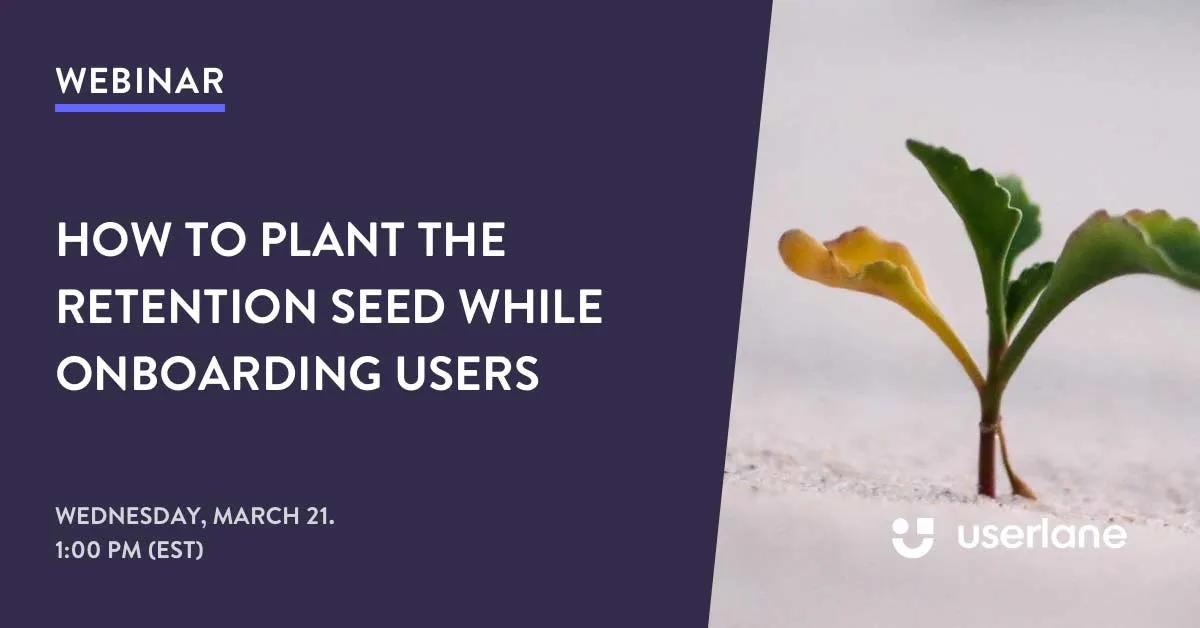6 Strategies to Increase Customer Retention

I’m sure you’ve all heard this quote from the crazy-haired physicist, “Insanity is doing the same thing over and over again and expecting a different result.” Well… what do you think Einstein would say about your customer retention strategy?
I’m sure if he were here to consult businesses today, he’d agree with me on this:
The way SaaS companies approach customer retention is insane!
This isn’t a groundbreaking conclusion. In fact, the numbers and solutions I will present in this article are not unique or surprising.
But what they say about your business is.
Most companies believe in the importance of retention and its positive impact on ROI. 70% of companies actually acknowledge that it’s cheaper to retain a customer than acquire one.
Why then, do these businesses continue to operate the same way and expect their retention metrics to increase? Textbook insanity if you ask me!
Whether you’re a customer success professional or the founder of a SaaS platform, here are some of the most powerful strategies you can implement to break the cycle of insanity affecting your customer retention rates.
But first, let’s discuss how retention’s role has changed in the SaaS market.
Table of Contents
Customer Retention for SaaS
Customer retention is a business’ ability to keep a customer happy with both their service and their product.
Traditionally, a customer would complete one transaction with a business and receive their purchase in full. Any costs associated with the acquisition of this customer was covered in this singular transaction. Customer retention was the cherry on top of an already successful business operation.

In today’s SaaS market, retention has taken on an entirely new and increased role for growth and sustainable customer success.
Customers pay for SaaS services and products through the cloud in smaller increments than they would with an independently operated site.
This means companies need to keep their customers longer to cover acquisition costs, and build a genuine brand loyalty for any chance at earning a profit! Venture capitalist and data junkie, Tomasz Tunguz, has even researched,
If a SaaS business is losing 2-3% of its customer base each month, they need to grow by at least 27% to 47% each year just to maintain the same revenue.
Without a strong customer retention strategy to build this loyalty, the average business will lose 20% of its customers every year. In some industries, like B2B SaaS, this customer churn can be as high as 80%!
It’s settled then.
Having a customer retention strategy is important and necessary to succeed in the SaaS market.
Improving your customer retention metrics doesn’t require a major company overhaul. As a founder or CSM, you can take these six surefire, yet simple steps to put an end to the insanity right now!
1. Relationship Marketing
Relationship marketing is all about forming (you guessed it!) a relationship with the customer.
We’ve already discussed that SaaS purchasing plans have recurring subscriptions. With relationship marketing, you won’t focus on closing a one-time sale. Instead, you must align your product’s identity with the customer’s personal identity in order to build a brand.
Relationship marketing places an emphasis on how your product is presented to the public, how well it embodies your customer’s identity, and how well your company treats its customers.
Set Reasonable Expectations
CSMs can motivate and encourage customers to build a relationship with the product through simple and immediate measures.
Customers often leave a company because they didn’t receive the guidance or support they needed, not because of the product itself. This is why the first step any CSM should take for customer retention is managing unrealistic customer expectations.
If you set firm numerical targets and focus on achievable goals from the very beginning, the customer will see the value your product provides that much sooner!

Reward Customers
As the CSM, you’re in contact with the physical customer more than anyone else. Start segmenting your customer interactions and use this as a foundation for building a loyalty program. A strong brand loyalty will make the customer’s identity morph into your own.
Amazon did this well with the implementation of an elite membership, Amazon Prime. By rewarding frequent shoppers who paid the premium for the membership with a free 2-day delivery service, Amazon provided an additional value to their service that built brand loyalty and increased customer retention.
When considering your very own rewards program, some questions you should ask yourself are:
- What pain points do our most active customers share?
- What expectations do they set for our product?
- What are their shared concerns?
Customers will start to identify with your brand if they are rewarded for their time, patience, and loyalty to your product.
Destroy Silos
SaaS founders and executives can get involved in relationship marketing by streamlining internal operations. If top management advocates for a tear down on workplace silos, different departments can come together to satisfy customer needs.
A company operating under one shared customer persona, communicating one message to the public, and centralizing data collection will build a brand loyalty that supports and encourages the customer to succeed, increasing customer retention.
Customers won’t churn if they think the switch to another brand makes a negative statement about their identity!

2. Focus on Customer Success
As a product of the digital transformation, Customer Success is a proactive, multi-channel spanning effort. Supporting this effort is the second surefire strategy to increase customer retention.
When focusing on customer success efforts, you should aim to educate, guide, and support your users while they interact with your company.
This will generate user delight, and prevent the need for reactive customer support.
Customer success professionals and executives can provide a more effective, proactive product to their customers by mapping each unique customer journey.
Customer Journey Mapping
For SaaS companies, this will mean carefully mapping each touchpoint for a single prospect. From social media, ads, website copy, trial phase, onboarding, support, check-in calls… and everything in between!
Remapping each journey will take time and is, undoubtedly, a company-wide effort. Although it may seem daunting at first, if you remember one thing it can be easier to tackle: keep the customer journey alive anytime and everywhere.
Additionally, you can implement a customer analytics platform such as Indicative to keep track and analyze user behavior. This will help you monitor your KPIs along the entire customer journey and aptly intervene to optimize acquisition, engagement, and retention.
Customers need to be able to interact with you and your team through multiple channels. Don’t force users to fill out a contact form if it’s not necessary to that specific action!
Allow them to reach out to your team through social media, live chat, email or request a call.
Effective customer success strategies should require you to enlist empathy and consider customer goals as a part of your own objectives.
A customer success strategy with poorly mapped customer journeys prevents the customer’s relationship with your brand to grow, destroying your customer retention rates.

3. Listen to Customers
Actually listening to customer feedback is what matters most when trying to improve your product, and is my third surefire strategy for customer retention.
In any business, especially SaaS, the customer success team is working directly with customers to collect feedback. You should use this insight to your benefit!
Closing the Feedback Loop
The most immediate step any CSM can take to increase customer retention is to pass feedback along to the product and marketing teams.
Informing the entire company about the current customer sentiment will not only work to further break down silos, but it will also close the feedback loop.
Closing the feedback loop increases customer retention by demonstrating to customers that you’re listening and that you care about their concerns.
The feedback loop is the most essential component for any Voice of Customer (VoC) program, and customer success is the only team that can properly facilitate it.
Customer success professionals can start planning the company’s very own VoC program to take appropriate action and audit results.
If you monitor the customer’s voice and actually implement change, you supply customers with the very reason to stick around!
4. Remind Customers of Product Value
Executives and customer success should consistently demonstrate to customers the value of the current product, which is the fourth surefire strategy for customer retention.
Quantify Product Value
Quantifying your product’s value will demonstrate the continued benefit of using your product to customers.
To increase customer retention rates, customer success professionals should calculate value using only the most meaningful metrics to each individual customer. Provide a unique and exclusive relationship for the customer.
By demonstrating the time and resources you’ve invested on your end and requiring customers to also play an active role, this will increase your product’s perceived value as a “trusted business partner” and make it difficult for customers to walk away from such a “committed relationship”, as Darrin Fleming accurately describes.
This should also work to keep your customer base educated. By molding clients into masters of your product, customer success can provide a check on the sales team.
This will ensure the right customers are prioritized, that they understand their individual ROI metrics, your product’s quantified value, and will increase customer retention.

5. Provide Transparency
Providing transparency in both the product roadmap and through every communication channel will demonstrate to your customer that they can trust what you’re saying.
This trust will reassure them that you are doing everything possible to meet their expectations.
Don’t hide any mistakes- take ownership right away! Rather than leave your product for a failed outcome, customers will come to appreciate the honesty.
Kentucky Fried Chicken responded perfectly, and humorously, when they were forced to close stores in Britain after a shortage in a particularly important ingredient: chicken.
Instead of resorting to excuses, KFC took out full page ads to apologize to customers. They rearranged the “KFC” to spell “FCK” and admitted their faults. Well done Colonel Sanders, the public forgives you.
A disgruntled customer will likely churn. Providing transparency will foster a feeling of goodwill and forgiveness, increasing customer retention.
6. Proper Onboarding Processes
“If a customer doesn’t understand the context of your app, can’t immediately see its benefits, or has a bad initial experience, you’ve likely squandered your only chance from the get-go,” says Lesley Park at Framed.
Providing an immediate “aha!” moment to customers is the most important part of any onboarding process- and retention strategy! If you waste the customer’s time from the very beginning, they won’t have a reason to stick around.
Reviewing and reshaping your onboarding process will do wonders for your customer retention rate.
Although your onboarding re-analysis should be given serious thought and time, one immediate action is to eliminate any diversion during initial signup.
According to a study by Localytics, 25% of users abandon and never return to an app after a single session. Don’t make this one interaction all about credit card data!
A second immediate step to take is implementing instructional software navigation guides as an overlay to your software. Don’t make customers guess where they have to click to accomplish something, show them! Real-time navigation guides demonstrate exactly how a step is completed, and minimize user frustration.
Whether you’re the CSM helping customers, or the engineer crafting a sleek overlay… constantly thinking about the user’s initial interaction is essential to a retention-boosting onboarding experience.
Final Thoughts
This is only a rough overview of customer retention strategies. I wanted to present them in a way that illustrated the immediate steps you can take to eliminate the cycle of insanity infecting companies in the SaaS market.
Here is a quick overview of my six surefire, yet simple strategies:
- Relationship Marketing
- Customer Success
- Listen to Customers
- Remind Customers of Product Value
- Provide Transparency
- Proper Onboarding
Every strategy should be further built upon, to provide a complete and in-depth consideration for customer retention rates, but this is where you can start today.
Einstein or not, it doesn’t take a genius to see the benefits of a customer retention strategy!
Are you interested in learning more about my sixth surefire step? Curious how onboarding is correlated to customer retention? Take an in-depth, personable approach and sign up for our live webinar today!
[spacer height=”20px”]


